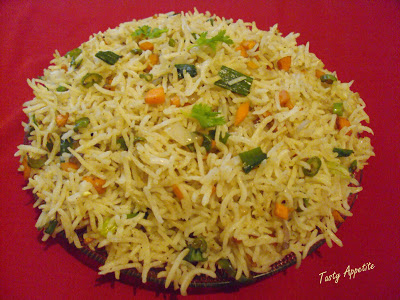

It is said that humans first cultivated wheat in 9000 BC. This is less than 1/20th of the time that we have been human that we have eaten wheat. It is said that humans first evolved around 200,000 years ago. Meaning, that we had the same basic anatomy 200,000 years ago that we have today. Of course, it would have taken some time for us to develop the anatomy that we developed 200,000 years ago. So, our digestive systems and bodies had already completely developed BEFORE we had introduced wheat into our diets. To learn more about where wheat fits into the timeline of human history, please click on this link. A lot of people find that they are sensitive to or allergic to wheat. This was a totally revolutionary way of thinking just 20 years ago, but today, it is only news. Today people call themselves “gluten free” if they manage to eliminate wheat from their diets. People like to discuss the inherent problems with gluten which is found in a number of grains – not just wheat. There is gluten in all of the foods listed below:
* Barley
• Barley starch
• Binder
• Bran
• Bulgur, cracked wheat
• Caramel color
• Cereal
• Cereal protein
• Couscous
• Dextrin (unless derived from corn, potato, arrowroot, rice, or tapioca)
• Durum wheat
• Emulsifier
• Fillers
• Flour
• Gelatinized starch
• Hydrolyzed plant protein (HPP) (unless derived from soy or corn)
• Hydrolyzed vegetable protein (HVP) (unless derived from soy or corn)
• Kamut
• Malt or malt flavoring
• Malted barley
• Maltodextrin
• Maltose
• Modified food starch
• Monoglycerides or diglycerides
• Monosodium glutamate (MSG)
• Natural filler
• Natural flavoring
• Oat bran
• Oat germ
• Oatmeal* (always with an asterisk)
• Pearl barley
• Rice malt
• Rice syrup
• Rusk
• Rye
• Rye starch
• Semolina
• Stablizer
• Thickener
• Triticale
• Vegetable gum
• Vegetable starch
• Wheat
• Wheat bran
• Wheat germ
• Wheat meal
• Wheat rusk
• Wheat starch
• Whey protein concentrate
• Whey sodium caseinate
• White vinegar
• White grain vinegar
There are other gluten containing foods not on this list. Oh, my God! So, what are you going to do, wheat is in everything! Yeah, that is the point. Look around and what do you see? I am not sure what you see, but, as you might imagine, being that I am a health care provider, “I SEE SICK PEOPLE.” Excuse the pun. Many of the sick people that I see are sick because they are eating things that are making them sick. Or, they are drinking things that are making them sick. Some people smoke things that make them sick. Some people even inject things that make them sick. Other people put things on their skin that make them sick. With most of us, there are a combination of these things that we do.
Try to stay cheery during the rest of this blog post, I don’t want you getting down because of my post. I want this post to be inspiring for you and give you the freedom to make new decisions and choices. Did you know that according to Dr. Datis Kharrazian, the well known health author and speaker, many people have such a strong allergic response to wheat and that this allergic response will last as long as 6 months? In fact, are you aware that according to EVERY SINGLE MEDICAL PHYSIOLOGY TEXTBOOK PRINTED DURING THE LAST 14 YEARS, THE IGG ALLERGIC RESPONSE AND SOMETIMES IGM LASTS 6 MONTHS. Yes, IGG and IGM allergic reactions last a long time. What does not kill you makes you weaker, not stronger. People who have an allergic response to wheat have an IGG response to wheat in their gut.
According to Noel M. Thomas, ND, “Cereal grains contain a number of anti-nutrients that contribute to health problems such as impaired mineral absorption, digestive dysfunction, leaky gut, inflammation, and cancer. as many as 1 in 133 people in the United States are also intolerant to gluten grains. Gluten causes immunological reactions impairing intestinal function and initiating autoimmune disease in other organ tissues. Gluten grains are also implicated in contributing to psychiatric disorders, such as schizophrenia and ADD. There is ample evidence to support that grains are not optimal human foods. Traditional wisdom deomonstrates that fermented grains are better tolerated, and in some individuals, can supplement the diet without adverse effects when whole foods rich in protein and healthy fats are regularly consumed.
Here are some interesting little known facts about wheat:
- In Hashimotos patients, wheat causes permanent destruction to Thyroid tissue.
- The wheat protein molecule gluten (gluteomorphin) is nearly identical to the hormone cortisol. Both cortisol and gluten are nearly identical to the cells in the microvilli of the small intestine. Because this is true, it is common for wheat eaters to have auto-immune disease of the small intestine (celiac disease, crohns, ulcerative colitis, etc) or a severe hormonal imbalance stemming from cortisol/glucagon/insulin imbalances which may lead to diabetes type 2.
- Most wheat is genetically modified although not all.
- People who are allergic to wheat are allergic to all wheat no matter how pure, natural or organic it is.
- Wheat germ is not wheat.
- It is possible to be allergic to wheat but NOT to be allergic to gluten. (Oh, yes it is.)
- Wheat in gluten are not at all the same thing.
- It is possible to be allergic to gluten but NOT be allergic to all gluten containing products. (Oh, yes it is, you can quote me on that.)
- It is possible to get rid of many allergies, but a true wheat allergy is usually not possible to get rid of (there are very, very rare exceptions to this.)
- auto-immunity and wheat sensitivity are often tied together.
- many of the people who are allergic to wheat feel BETTER when they eat wheat then when they do not.
- the majority of people in the population who are allergic to wheat do not have any symptoms that they are aware of. Because they do not have any symptoms that they know about, they assume that they are not allergic to wheat when really they are.
- People who are sensitive to wheat often have cloudy thinking.
- People who are highly sensitive to wheat or who have auto-immune types of conditions often have experienced multiple mold/yeast/fungus/candida infections.
- Although wheat contains B vitamins, it actually depletes the body of B vitamins. The reason for this is that it requires more B vitamins to metabolize wheat than you can obtain from ingesting it.
Now that you are really depressed, why don’t I share with you another entire list of foods that may possibly contain gluten. You may not necessarily expect these foods to contain gluten but they may.
Hidden sources of gluten can/may include or be found in:
• Baking powder
• Bouillon
• Cheese (especially reduced-fat varieties, anything “veined” where cheese mold might have been grown on bread, or shredded/crumbled cheese which may contain flour to prevent clumping)
• Chili powder
• Chewing gum
• Coffees (flavored)
• Corn tortillas (may contain wheat flour)
• Curry powder (may contain flour to prevent clumping)
• Ground spices
• Gravy sauces/mixes
• Ice cream/frozen yogurt
• Low-fat or reduced-fat dairy products
• Imitation seafood
• Margarine/butter spreads
• Mustards/ketchup
• Nondairy creamers
• Nuts – dry-roasted
• Potato and tortilla chips (flavored)
• Salad dressing/mayonnaise
• Seasoning mixes
• Sour cream (reduced-fat varieties)
• Soy sauce
• Tea (flavored/instant)
• Vanilla extract and other flavorings
• White pepper (may be bulked with flour)
• Yogurt (reduced fat/flavored varieties)



